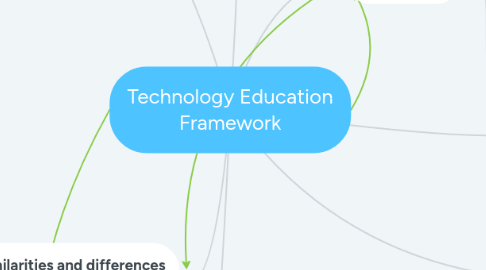Technology Education Framework
作者:Jade Tahau

1. Triple E
1.1. Engage - Does the technology allow the student to focus on the task with less distraction? Does the technology motivate the student to start the learning process? Does the technology cause a shift in the student's behaviour?
1.2. Enhance - Does the technology aide the student to develop a more sophisticated understanding of the content? Is the content easier to understand? Does it create a path for students to demonstrate their understanding in a way that couldn't be achieved through traditional tools?
1.3. Extend - Does the technology allow students to learn things that are beyond what they would learn on their typical school day? Does the technology create a bridge between learning and everyday experiences? Does the technology allow students to build skills that would benefit their everyday lives.
2. TIM Framework
3. SAMR
3.1. Substitution - The technology acts as a direct tool substitute, with no functional changes.
3.2. Augmentation - The technology acts as a direct tool substitute, with functional improvement.
3.3. Modification - Technology allows for significant task redesign
3.4. Redefinition - Technology allows for the creation of new tasks, previously inconceivable.
4. The Similarities and differences between TPACK, Triple E, and SAMR
4.1. They all seek to contribute to student learning.
4.2. They allow the teacher to apply knowledge that they have and to use their discretion based on this knowledge.
4.3. Some of these have different levels that can still be applicable such as the SAMR - Substitution, Augmentation, Modification, and Redefinition. Others require the integration of all the different elements - such as TPACK - applying all the principles - CL, PK, and TK; and Triple E - Enhance, Engage and Extend.
4.4. These are all tools teachers can use and students have access to.
4.5. Some of the different levels address different issues - such as with the Triple E, it allows the teacher to think and plan more for the future such as asking questions like "does this allow the student to build skills that would benefit them in their everyday lives." whereas levels in the SAMR such as substitution only addresses a temporary issue such as having access to a device which is only temporary for the class while using it.
4.6. All the different frameworks have the potential to meet the needs of the students learning and potential.
4.7. All rely on the teacher to take action in deciding whether these frameworks will simply be casual, be enhanced, or can be completely transformed into a new and improved way of learning.
5. ISTE Standards
6. TPACK
6.1. Technological Knowledge (TK) - Represents your knowledge of the tools. How to select, use and integrate technology into your curriculum. It is also about the quality of content that students access through apps, games, and websites.
6.2. Content Knowledge (CK) - This is the what. It is made up of all the facts, content, and theories of any given discipline,
6.3. Pedagogical Knowledge (PK) - This is the How. This includes Instructional strategies, assessments, and teaching methods.
7. PICRAT
7.1. PIC-RAT gives us evaluation for both what the teacher and student are doing with and using the technology for.
7.2. It clarifies a little more from previous models what good practice looks like and how it involves student use.


